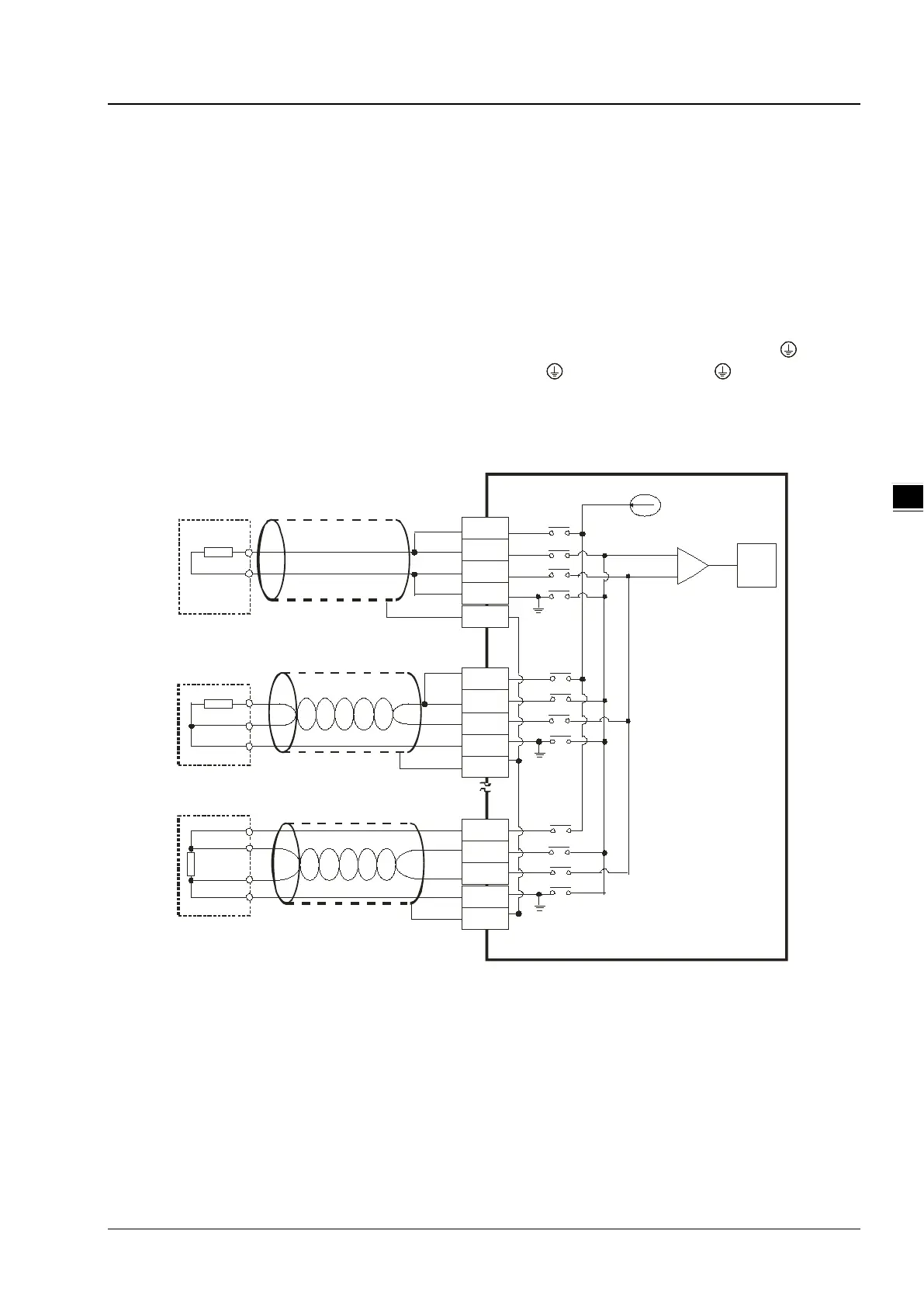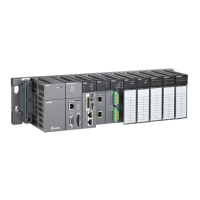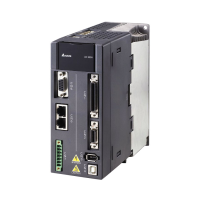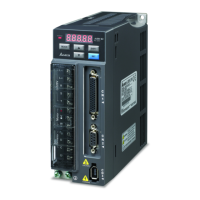Chapter 4 Installation and Wiring
4-103
*1. Please use a shielded cable as an analog input cable, and isolate the shielded cable from other power cables.
*2. If current is connected, the connection between Vn+ and In+
(n=0~7) needs to be a short circuit.
*3. If ripple voltage results in interference with the wiring, please connect a 0.1~0.47 μF and 25 V capacitor.
*4. Please isolate the analog output cable from other power cables.
*5. If the ripple voltage of the input terminal of the load connected is large, and results in interference with the wiring,
please connect a 0.1~0.47 μF and 25 V capacitor.
*6. Please connect the ground wire in the shielded cable to the terminal SG.
*7. Once the module is installed on a backplane, the module’s terminal SG and the backplane’s terminal
will be a
short circuit. In this case, please connect the backplane’s terminal to the ground terminal .
4.11 Wiring Temperature Measurement Modules
4.11.1 Wiring AH04PT-5A
1.53 mA (Ni100
sensor Pt100
sensor, or
resistor)/204.8uA
(Pt1000)*3
,
Shielded cable*1
0~300
Ni100/Ni1000
Pt100/Pt1000
Ω
0~300
Ni100/Ni1000
Pt100/Pt1000
Ω
Ni100/Ni1000
Pt100/Pt1000*2
Shielded cable*1
Shielded cable*1
2-wire
3-wire
4-wire
AG
ADC
AG
INA
AG
CH0
O0+
I0+
I0-
O0-
FG
CH1
O1+
I1+
I1-
O1-
FG
CH3
O3+
I3+
I3-
O3-
FG
*1. The cable connected to the input terminal should be the cable or the shielded twisted pair cable which can be
connected to an Ni100/Ni1000/Pt100/Pt1000 sensor, and should be kept separate from other power cables and
cables which generate noise. Please use a three-wire temperature sensor. If you want to use a two-wire temperature
sensor, On+ and In+ must be short-circuited, and On- and In- must be short-circuited. (n is in the range of 0 to 3.)
*2. If you want to measure resistance in the range of 0 Ω to 300 Ω, you can use a two-wire or three-wire sensor instead of
a four-wire sensor.
*3. You need to select an appropriate sensor. If an Ni100 temperature sensor, a Pt100 temperature sensor, or a
resistance sensor is used, the internal excitation current is 1.53 mA. If an Ni1000 temperature sensor, or a Pt1000
temperature sensor is used, the internal excitation current is 204.8 μA.

